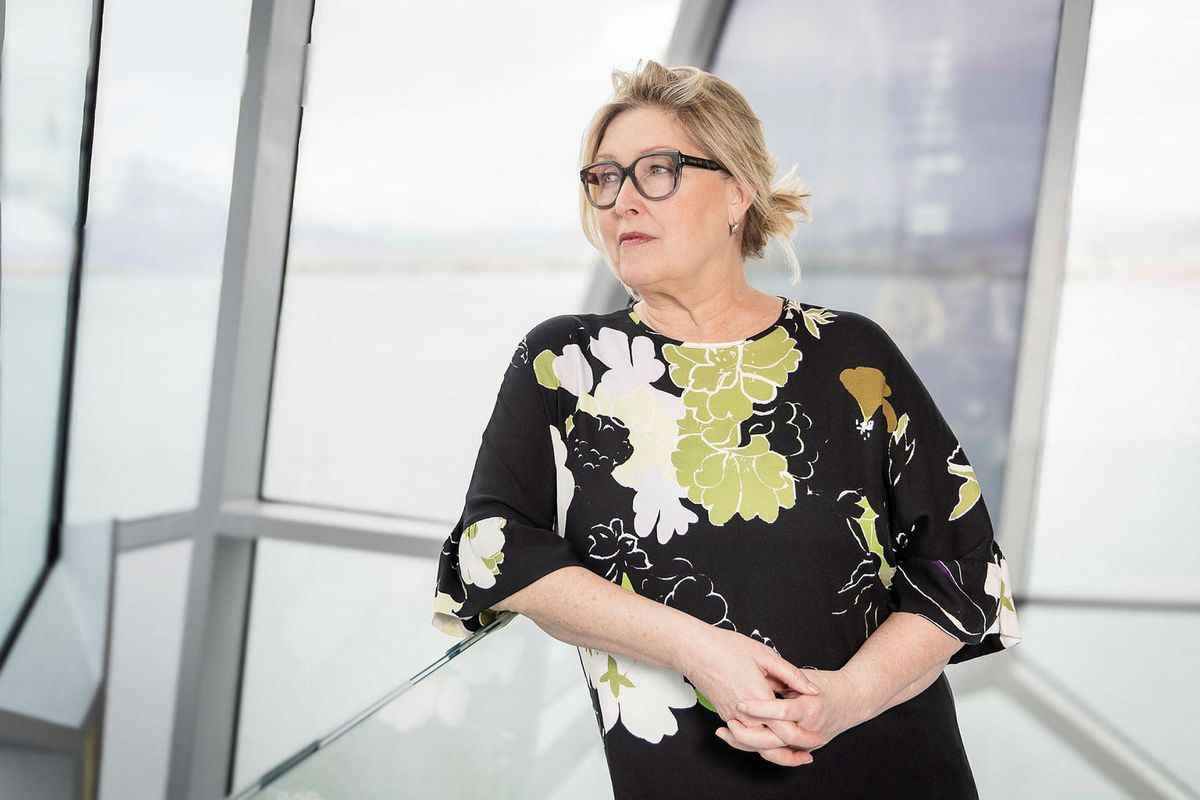By Mbl.is
Copyright mbl

The construction of the Harpa Concert and Conference Hall was a successful decision, and ensuring the building operates at its full potential is good business. Harpa supports cultural tourism in Iceland, which plays a key role in maintaining the country as a strong destination, says Svanhildur Konráðsdóttir, Harpa’s CEO.
She emphasizes that while Harpa’s economic value is undeniable, its cultural and social contributions are of even greater importance.
Her comments come in connection with the findings of a 2023 report on the economic impact of Harpa’s operations. She presented the results today at the Capital Area Tourism Conference, focusing on what she calls “the Harpa effect” — its influence on nearby businesses and the arrival of international visitors.
Turnover of ISK 5.5 Billion in 2023
Harpa is open 364 days a year and hosts around 1,400 events annually.
In 2023, Harpa’s total revenue amounted to ISK 5.5 billion, including all tenants’ operations, ticket sales, and estimated conference fees.
The building’s value creation is five times greater than its annual operating costs. According to
Konráðsdóttir
, this stems from income generated by concerts, conferences, and other events that attract both international visitors to Iceland and Icelanders to Harpa itself.
“If Harpa didn’t exist, Iceland would not be able to host events of this magnitude,”
says Konráðsdóttir.
As an example, she mentions the American band Wilco, which performed in Harpa’s Eldborg Hall. Not only was the band brought to Iceland, but also thousands of fans — resulting in 7,000 hotel nights booked in the capital area.
Such events boost demand for hotels, restaurants, shops, transportation, and other services, while also having a broader impact on Icelandic culture and the creative industries.
Tax revenue 15 times higher than operating contributions
In 2023, Harpa welcomed around 1.2 million visitors, a number that continues to grow. The building’s annual value creation is estimated at ISK 10 billion, with ISK 9 billion in tax revenue flowing to the government each year from its operations.
These tax revenues are 15 times higher than the combined annual contributions from Harpa’s owners, the Icelandic government and City of Reykjavík.
Around 650 jobs can be directly or indirectly linked to Harpa, particularly in the tourism sector.
“There are artists, event planners, technical crews of all kinds, everyone involved in staging events — and then, of course, the staff required to maintain and operate the building itself,”
Konráðsdóttir
Large events also have an immediate effect on the surrounding area.
“When a major event is happening at Harpa, restaurants nearby bring in extra staff. It has a direct impact on the entire local service environment,”
Cultural tourism strengthened by Harpa
In 2023, Harpa hosted 22 conferences with more than 500 attendees each. About 1% of all foreign tourists visited Iceland specifically for an event at Harpa, and the venue welcomed 16,000 international conference guests.
Spending per Harpa conference guest is twice as high as that of the average tourist.
Harpa plays a vital role in strengthening cultural tourism, which in turn increases value creation, diversifies revenue streams, and enhances Iceland’s image as a destination.
Cultural tourism helps distribute travelers more evenly across the country, extends the tourism season, and supports sustainability by reducing pressure on Iceland’s natural sites. It also provides more cultural experiences for locals, fostering community pride and cohesion.
About 10% of foreign visitors come to Iceland specifically for a cultural event, while 55% say Icelandic culture influenced their decision to visit. Harpa itself has become a symbol of Icelandic culture.
Impact beyond financial figures
The 2023 report was conducted by the Research Center for Creative Industries, initiated by Harpa. It assessed the building’s direct, indirect, and derived effects on nearby businesses and international tourism.
The findings show that Harpa’s economic impact is significant, though Svanhildur stresses that its influence cannot be measured in financial terms alone.
“I believe it’s a matter of fairness for Harpa’s owners to understand the return on investment — and to capture the full scope of the value created,”
Konráðsdóttir
, explaining the motivation behind the report.
The next step, she says, is to map out Harpa’s cultural and social impacts, which she admits is a more complex task but fully achievable.
Finally, Svanhildur cited a Maskína public survey, which found that 90% of visitors to Harpa hold a positive view of the venue, while fewer than 5% expressed negative opinions.



